Hudora 12819 Handleiding
Hudora
Niet gecategoriseerd
12819
Bekijk gratis de handleiding van Hudora 12819 (6 pagina’s), behorend tot de categorie Niet gecategoriseerd. Deze gids werd als nuttig beoordeeld door 43 mensen en kreeg gemiddeld 4.4 sterren uit 22 reviews. Heb je een vraag over Hudora 12819 of wil je andere gebruikers van dit product iets vragen? Stel een vraag
Pagina 1/6

Hersteller: HUDORA | Jägerwald 13 | 42897 Remscheid | Germany
www.hudora.de
DE AUFBAU- UND GEBRAUCHSANLEITUNG
Alle Abbildungen sind Designbeispiele.
HERZLICHEN GLÜCKWUNSCH ZUM ERWERB DIESES PRODUKTES!
Bitte lesen Sie diese Bedienungsanleitung sorgfältig durch. Die Bedienungsanleitung ist
fester Bestandteil des Produktes. Bewahren Sie sie deshalb genauso wie die Verpackung
für spätere Fragen sorgfältig auf. Wenn Sie das Produkt an Dritte weitergeben, geben Sie
bitte immer diese Bedienungsanleitung mit. Dieses Produkt muss von einem Erwachsenen
aufgebaut werden. Dieses Produkt ist nicht für den gewerblichen Gebrauch konstruiert.
Die Benutzung des Produktes erfordert bestimmte Fähigkeiten und Kenntnisse. Setzen Sie
es nur altersgerecht ein, und benutzen Sie das Produkt ausschließlich für seinen vorgese-
henen Zweck.
TECHNISCHE SPEZIFIKATIONEN
Artikel: Longboard
Artikelnummer: 12800, 12802, 12803, 12804, 12805, 12806, 12807,
12808, 12809, 12810, 12811, 12816, 12817, 12819,
12820, 12821
Maximales Benutzergewicht: 100 kg
INHALT
1 x Longboard | 1 x Anleitung
Andere beiliegende Teile dienen dem Transportschutz und werden für den Aufbau und den
Gebrauch des Artikels nicht benötigt.
SICHERHEITSHINWEISE
• ACHTUNG - Skateboardfahren ist gefährlich!
• Ihr Skateboard entspricht hohen Qualitätsansprüchen. Alle Materialien sind sorgfältig
ausgewählt und unter qualitätssichernden Maßnahmen zusammengesetzt worden, so
dass das Produkt in einem weiten Spektrum genutzt werden kann. Dennoch möchten
wir darauf hinweisen, dass ungeübte Fahrweise und unsachgemäße Handhabung
schnell zu übermäßigem Verschleiß, Beschädigung des Produktes oder Verletzungen
führen kann. Für Schäden aus diesen Handlungen können wir daher keine Gewähr
leisten.
• Anfänger auf Skateboards sollten mit einem Freund oder den Eltern üben.
• Kinder unter 8 Jahren sollten beim Skateboardfahren immer beaufsichtigt werden.
• Beim Skateboardfahren geht Sicherheit immer vor Tempo! Fahren Sie nie schneller
bergab, als Sie beim Abspringen laufen können!
• Laufen auf einem Skateboard oder darauf aufzuspringen kann gefährlich sein!
• Es ist eine Einsatzfläche zu wählen, die es erlaubt, die Fähigkeiten des Skateboardfah-
rens zu verbessern – das Skateboard nicht auf Bürgersteigen oder Straßen nutzen, wo
Skateboardfahrern und anderen Menschen ernste Unfälle zustoßen können.
• Skateboardfahren auf nassen oder unebenen Flächen ist zu vermeiden.
• Alles ist langsam zu erlernen, auch neue Tricks. Wird das Gleichgewicht verloren, so
sollte man nicht warten, bis man hinfällt, sondern abspringen und neu starten. Es ist
zunächst nur mäßiges Gefälle herunterzufahren. Danach sind Gefälle zu befahren, auf
denen die Geschwindigkeit nur so hoch ist, dass vom Brett abgesprungen werden kann,
ohne zu stürzen.
• Die schlimmsten Verletzungen sind Knochenbrüche, so ist zuerst zu lernen, ohne
Skateboard zu fallen (möglichst durch Abrollen).
• Vor dem Abspringen vom Skateboard ist darauf zu achten, wohin es rollen kann – es
könnte andere verletzen.
• Fahren Sie niemals ohne Hand-, Handgelenk-, Knie- und Ellenbogenschutz sowie Helm!
• Tragen Sie beim Fahren Sportschuhe mit durchgehender, rutschhemmender Sohle!
Achten Sie darauf, dass die Sohlen trocken sind.
• Benutzen Sie das Skateboard nur auf dafür geeigneten Flächen, die eben, sauber,
trocken und möglichst frei von anderen Verkehrsteilnehmern sein sollten.
• Nehmen Sie immer Rücksicht auf andere Verkehrsteilnehmer und beachten Sie, dass
ein Skateboard kein Fahrzeug im Sinne der Straßenverkehrsordnung ist. Fahren Sie
nicht im öffentlichen Straßenverkehr damit.
• Bevor Sie starten: Prüfen Sie die Rollen, die Achsen und alle Verbindungselemente auf
festen Sitz.
• Passen Sie Ihre Geschwindigkeit Ihrem fahrerischen Können an.
• An Ihrem Skateboard dürfen Sie keine Veränderungen vornehmen, die die Sicherheit
beeinträchtigen könnten. Die selbsthemmende Wirkung von selbstsichernden Muttern
bzw. Lack kann nach mehrmaligem Lösen und Anziehen der Verbindungselemente
nachlassen.
• Regelmäßige Kontrolle, Wartung und Instandhaltung erhöhen die Sicherheit und Le-
bensdauer Ihres Skateboardes.
• Suchen sie nach Splittern und Rissen im Brett! Beseitigen Sie sie gegebenenfalls, um
sich nicht zu verletzen.
• Es ist einem Klub in der Nähe beizutreten und mehr zu lernen. Es ist zu beweisen, ein
guter Skateboardfahrer zu sein, indem auf sich selbst und andere Acht gegeben wird.
NUTZUNGSHINWEISE
ALLER ANFANG IST SCHWER ...
... die meisten Unfälle passieren „Anfängern“ in den ersten zehn Minuten. In dieser Phase
sollte man äußerst vorsichtig sein.
1. GRUNDSTELLUNG
Als ungeübter Skateboarder platzieren Sie zunächst einen Fuß in Fahrtrichtung in Höhe der
Vorderräder. Belasten Sie diesen Fuß etwas und beugen Sie leicht das Knie. Der zweite Fuß
wird nun über der Hinterachse quer auf das Brett gestellt. Beachten Sie, dass Sie immer den
vorderen Fuß belasten, d.h. das Körpergewicht wird immer nach vorne verlagert. Achten Sie
darauf, dass Sie grundsätzlich nach vorne absteigen. Nach einigen Versuchen werden Sie
merken, dass Sie ein immer besseres Gefühl für das Skateboard bekommen. Durch Anzie-
hen und Lösen der Lenksäulenmutter auf der Unterseite des Skateboards und die damit
verbundene Veränderung des Drucks auf die Lenkpuffer können Sie den Bewegungsradius
des Skateboards beeinflussen.
2. ERSTE FAHRVERSUCHE
Versuchen Sie nun das Brett entlang der Längsachse nach rechts und links zu kippen, indem
Sie Ihr Gewicht verlagern. Die Gewichtsverlagerung erfolgt hierbei aus den Knie- und Fuß-
gelenken, wobei der Oberkörper aufrecht bleibt. Balancieren Sie hierbei das Gleichgewicht
mit Ihren Armen aus. Um das Skateboard in Bewegung zu setzen, stellen Sie zunächst einen
Fuß, wie in der Grundstellung beschrieben, auf das Brett. Stoßen Sie sich mit dem zweiten
Fuß mehrmals ab. Sobald Ihr Skateboard genügend Fahrt aufgenommen hat, stellen Sie den
zweiten Fuß auf den hinteren Teil des Boardes. Achten Sie darauf, dass Sie niemals nur ei-
nen Fuß auf das Ende des Boardes setzen. Abschüssiges Gelände sollten Anfänger zunächst
meiden.
3. BREMSEN
3.1 Bremsen bei langsamer Fahrt
Zuerst müssen Sie den hinteren Fuß neben das Brett auf den Boden setzen und bremsend
mitlaufen. Der vordere Fuß bleibt auf dem Brett, bis der Bremsvorgang beendet ist.
3.2 Bremsen bei schnellerer Fahrt
Hierbei wird ähnlich verfahren wie beim Bremsen bei langsamer Fahrt. Nach dem ersten
Abbremsen durch den hinteren Fuß wird aber auch der vordere Fuß vom Brett genommen.
Wichtig ist, sofort nach dem Absprung vom Brett das Skateboard zu stoppen. Ein unkontrol-
liert weiter laufendes Skateboard stellt eine Gefahr für die Allgemeinheit dar.
3.3 „Wheelie-Stop“
Diese Art des Bremsens ist nur für geübte Fahrer geeignet. Der hintere Fuß drückt das
Skateboard hierbei fest auf den Boden, so dass es auf dem Boden schleift, bis es zum Still-
stand kommt. Beachten Sie hierbei, dass diese Art des Bremsens unweigerlich zum Ver-
schleiß des Boardes führt.
4. KURVENTECHNIK
Skateboards sind generell über Körpergewichtsverlagerung lenkbar. Zur Einstellung Ihrer
favorisierten Lenk-Kraftübertragung, lösen Sie den King Pin oder drehen ihn fester. Der King
Pin ist die Schraube, die von unten durch die Achse in den Truck verschraubt ist und je nach
Einstellung die eingesetzten PU Cushions zusammendrückt. Achten Sie darauf, den King Pin
nicht zu weit zu lösen! Sein Kopf im Truckinneren könnte sich sonst verkannten und Sie
müssten den Truck komplett vom Board lösen, um die Grundstellung wieder einzurichten!
Die richtige Lenkeinstellung ist vor jeder Benutzung zu überprüfen! Beschädigte oder rissige
Puffer müssen ersetzt werden! Nehmen Sie zunächst die Grundstellung ein. Beugen Sie nun
Ihre Knie etwas tiefer und verlagern Sie Ihr Gewicht zu der Seite des Bretts, zu der Sie auch
die Kurve fahren wollen. Um eine Rechtskurve zu fahren, müssen Sie Ihr Gewicht nach
rechts verlagern, um eine Linkskurve zu fahren, müssen Sie Ihr Gewicht nach links verla-
gern. Üben Sie zunächst eine Linkskurve und dann eine Rechtskurve. Im Anschluss daran
versuchen Sie eine Rechts- und eine Linkskurve zu verbinden. Wie groß der Radius der
Kurve wird, hängt davon ab wie stark der von Ihnen seitlich ausgeübte Druck ist. Je stärker
der Druck, um so enger werden die Kurven.
WARTUNG UND LAGERUNG
Reinigen Sie das Produkt nur mit einem Tuch oder feuchten Lappen und nicht mit speziellen
Reinigungsmitteln! Überprüfen Sie das Produkt vor und nach Gebrauch auf Schäden und
Verschleissspuren. Nehmen Sie keine baulichen Veränderungen vor! Verwenden Sie zu Ihrer
eigenen Sicherheit nur Original-Ersatzteile. Diese können Sie bei HUDORA beziehen. Sollten
Teile beschädigt sein oder scharfe Ecken und Kanten entstanden sein, darf das Produkt nicht
mehr verwendet werden! Nehmen Sie im Zweifel mit unserem Service Kontakt auf (http://
www.hudora.de/service/). Lagern Sie das Produkt an einem sicheren, witterungsgeschütz-
ten Ort, so dass es nicht beschädigt werden kann oder Personen verletzen kann.
ROLLEN- UND LAGERWECHSEL
Die regelmäßige Wartung des Skateboards trägt zur Sicherheit des Gerätes bei! Prüfen Sie
die einwandfreie Funktion aller Teile daher regelmäßig. Laufrollen und Lager sind als Zube-
hör erhältlich und können unabhängig voneinander gewechselt werden, wenn sie verschlis-
sen oder abgefahren sind. Beachten Sie beim Rollenwechsel, dass die Lager aus den alten
Rollen ausgebaut und in die neuen Rollen wieder eingesetzt werden müssen. Lösen Sie dazu
die Achsmuttern, entnehmen Sie die Rolle und drücken Sie mit einem geeigneten Werkzeug
die Lager von den Rollen. Zum Einbau die Lager in die neuen Rollen einsetzen und wieder
auf die Achse setzen. Danach die Achsmutter fixieren (siehe auch Sicherheitshinweise!)! Das
Skateboard ist mit Industrielagern ausgestattet, die unter hohem Druck bei der Herstellung
mit Fett gefüllt wurden. Aus diesem Grund laufen die Rollen erst bei Belastung während der
Nutzung leicht und schnell. Wie die Rollen, so sollten die Lager auch ausgetauscht werden,
wenn sie nicht mehr einwandfrei funktionieren. Man sollte sie aber auf gar keinen Fall aus-
einander nehmen!
ENTSORGUNGSHINWEIS
Bitte führen Sie das Produkt am Ende seiner Lebensdauer den zur Verfügung stehenden
Rückgabe- und Sammelsystemen zu. Fragen beantworten die Entsorgungsunternehmen vor
Ort.
SERVICE
Wir sind bemüht einwandfreie Produkte auszuliefern. Sollten trotzdem Fehler auftreten, sind
wir genauso bemüht, diese zu beheben. Deswegen erhalten Sie zahlreiche Informationen
zum Produkt, zu Ersatzteilen, Problemlösungen und verloren gegangene Aufbauanleitungen
unter http://www.hudora.de/service/.
Art.-Nr. 12800, 12802, 12803, 12804,
12805, 12806, 12807, 12808, 12809,
12810, 12811, 12816, 12817,
12819, 12820, 12821
Stand 01/16
1/6

EN
INSTRUCTIONS ON ASSEMBLY AND USE
CONGRATULATIONS ON PURCHASING THIS PRODUCT!
Please read these instructions carefully. The instructions are an integral component of
the product. Therefore, please store them and the packaging carefully in case questions
arise in the future. Please always include these instructions when giving the product to
a third party. This product must be assembled by an adult. This product is not designed
for industrial use. The use of the product requires certain capabilities and skills. Always
adjust according to the age of the user and use for the purpose it has been designed for.
TECHNICAL SPECIFICATIONS
Item: Longboard
Item number: 12800, 12802, 12803, 12804, 12805, 12806, 12807, 12808,
12809, 12810, 12811, 12816, 12817, 12819, 12820, 12821
Maximum user weight: 100 kg
CONTENTS
1 x Longboard | 1 x Manual
Other items included are meant to facilitate safe transportation and are not required for the
installation and use of the product.
SAFETY INSTRUCTIONS
• WARNING - Skateboarding can be dangerous!
• Your skateboard corresponds to the highest quality standards. All materials have been
carefully chosen and assembled using quality assured measures so that the product
can have a wide spectrum of uses. However we would also like to point out that inexpe-
rienced use of the skateboard and improper handling can quickly lead to excessive
wear, damage to the product, or injuries. Therefore we cannot take responsibility for
damages arising from such actions.
• Beginners should practice their skateboarding with a friend or their parents.
• Children under 8 years of age should always be supervised when skateboarding.
• When skateboarding safety always has precedence over speed! Never travel downhill
quicker than you could run if you jumped off!
• Running on a skateboard or jumping on one can be dangerous!
• A surface must be chosen which makes it possible for skateboarding skills to be impro-
ved – not pavements or streets where serious accidents could happen to skateboarders
or others.
• Skateboarding on wet or uneven surfaces should be avoided.
• It takes time to learn anything, new tricks also. If you lose your balance you should not
wait until you fall off, but should jump of f and start again. Initially you should only de-
scend on moderate slopes. After that you should only use the skateboard on slopes
where your speed is kept at a level where you could jump off the board without falling.
• The worst injuries are fractures so you should first learn how to fall without a skate-
board (using a rolling motion if possible).
• Before jumping off the skateboard you should watch out for where it might roll – it could
injure others.
• Never go skateboarding without hand, wrist, knee and elbow guards and a helmet!
• Wear sports shoes with end-to-end anti-slip soles when skateboarding! Make sure that
the soles are dry.
• Use the skateboard on surfaces suitable for skateboarding. They should be flat, clean,
dry and as free from traffic as possible.
• Always be considerate of other road users and please note that a skateboard is not a
vehicle in the sense of road traffic regulations. Don't use it in traffic.
• Before you begin, check the roller wheels and axles and connecting elements. They
should all be tightened properly.
• Adjust your speed in accordance with your skateboarding abilities.
• Do not carry out any changes to the skateboard which would affect its safety. The self-
locking effects of self-securing nuts and the paintwork can be reduced after repeated
loosening and tightening of the fastening elements.
• Regular checks, maintenance and servicing will increase the safety and lifespan of your
skateboard.
• Look for splits and cracks on the board! Remove them, if required. This is for your
safety.
• Join a club in your area and learn more. Prove you are a good skateboarder and care
about yourself and others.
USAGE INSTRUCTIONS
NOTHING’S EASY AT FIRST …
... most accidents happen to “beginners” within the first ten minutes. Particular care should
be taken during this stage.
1. STARTING POSITION
As an inexperienced skateboarder you should initially place a forward-facing foot level with
the front wheels. Put a little weight on the foot and gently bend your knee. The second foot
is then placed at a right angle on the board, over the rear axle. Take care that it is always
the front foot you put your weight on, i.e. the weight is always shifted forwards. Take care
to alight towards the front as a basic principle. After a few attempts you will notice that you
get an improved feel for the skateboard. By tightening and loosening the kingpin nut on the
underside of the skateboard and the connected change in the pressure on the bushings, the
movement radius of the skateboard can be controlled.
2. FIRST ATTEMPT AT RIDING ON THE SKATEBOARD
Try to tilt the board right and left along the longitudinal axis by shifting your weight. This
shifting of weight comes from the knee and ankle joints, while the upper body stays upright.
Use your arms to keep your balance. To get going with the skateboard, firstly place one foot
on the board, as described in the starting position section. Push off repeatedly with the other
foot. As soon as your skateboard gathers sufficient momentum, put your second foot on the
rear part of the board. Take care to never place a foot at the end of the board. Beginners
should initially stay off sloping ground.
3. BRAKING
3.1 Braking when travelling slowly
Firstly place your back foot on the ground near the board and use it to brake gradually. The
front foot stays on the board until the braking is finished.
3.2 Braking when travelling more quickly
This is a similar process to braking when travelling slowly. However after the first braking
movement with the back foot the front foot is also taken off the board. It is important to stop
the skateboard immediately after jumping off it. An uncontrolled skateboard that continues
to run on constitutes a general danger.
3.3 ”Wheelie stop”
This type of braking is only for experienced skateboarders. The back foot pushes the Skate-
board firmly against the ground for this, so that it drags along the ground until it comes to
a stop. Please note that this kind of braking inevitably leads to the scuffing of the board.
4. CORNERING TECHNIQUE
Skateboards can generally be steered by shifting one‘s body weight. In order to set your
favorite steering transmission, loosen the kingpin or screw it in tighter. The kingpin is the
screw that is screwed in from below through the axis in the truck and which presses the in-
stalled PU cushions together depending on the setting. Make sure that you do not loosen the
kingpin too much. Its head in the interior of the truck could otherwise twist and you would
have to detach the truck from the board completely in order to reset the basic position. The
correct steering setting should be checked before every use. Damaged or cracked buffers
must be replaced! Firstly note the starting position. Now bend your knee somewhat lower
and shift your weight to the side of the board on which you want to take the corner. To take a
right-hand corner you must shift your weight to the right, to take a left-hand corner you must
shift your weight to the left. Initially practice taking a left-hander and then a right-hander.
Following this, try to combine a right-hander with a left-hander. The size of the radius of the
turn will depend on how strongly you have exerted lateral pressure. The more pressure you
exert, the tighter your cornering will be.
MAINTENANCE AND STORAGE
Use a dry or damp cloth only to clean the product; do not use special cleaning agents! Check
the product for damage or traces of wear and tear before and after each use. Do not make
any structural changes. For your own safety, please use original spare parts only. These can
be sourced from HUDORA. If parts become damaged or if sharp edges or corners should
develop, the product may not be used any more. If in any doubt, please contact our service
team (http://www.hudora.de/). Store the product in a safe place where it is protected from
the elements, cannot be damaged, and cannot injure anyone.
ROLLER WHEEL AND BEARING REPLACEMENT
Regular maintenance of the skateboard contributes in keeping it safe! It is therefore neces-
sary to regularly check that all parts are functioning perfectly. Roller wheels and bearings
the available as accessories and can be replaced independent of each other when they have
worn out. While changing the wheels, keep in mind that the bearing needs to be removed
from the old wheels and attached to the new ones. To do this, unfasten the axle nuts, remove
the wheel and press out the bearing from the wheel using a suitable tool. Then insert the
bearing into the new roller wheels and position on the axle again. Now fasten the axle nuts.
(also see the Safety instructions!). The skateboard has industrial bearings that have been
filled with grease under high pressure. This is the reason why the roller wheels function
easily and quickly only under load. The bearings also need to be replaced if they stop func-
tioning properly. But they must never be separated!
DISPOSAL ADVICE
At the end of the product’s life, please dispose of it at an appropriate collection point provi-
ded in your area. Local waste management companies will be able to answer your questions
on this.
SERVICE
We make every effort to deliver faultless products. If faults do arise however, we put just
as much effort into rectifying them. Therefore, you can find numerous information on the
product, replacement parts, solutions to problems and lost assembly manuals at http://
www.hudora.de/service/.
All images are examples of the design. 2/6

CONGRATULAZIONI PER AVER ACQUISTATO QUESTO PRODOT TO!
La preghiamo di leggere molto attentamente questo manuale. Il manuale fa parte del pro-
dotto. Quindi va conservato come tutto l‘imballaggio per eventuali domande in futuro.
Dando il prodotto a terzi per cortesia allegare sempre il manuale. Il prodotto deve esse-
re montato da un adulto. Questo prodotto non è adatto per uso commerciale. L‘utilizzo
del prodotto richiede determinate abilità e conoscenze. Usare solo in maniera adeguata
all'età, e utilizzare il prodotto esclusivamente per gli scopi previsti.
SPECIFICHE TECNICHE
Articolo: Longboard
Articolo n°: 12800, 12802, 12803, 12804, 12805, 12806, 12807,
12808, 12809, 12810, 12811, 12816, 12817, 12819,
12820, 12821
Massima capacità portante: 100 kg
CONTENUTO
1 x Longboard | 1 x Istruzioni per l‘uso
Sono incluse altre parti che servono alla protezione durante il trasporto e non sono necessa-
rie per il montaggio e l'utilizzo dell'articolo.
AVVERTENZE DI SICUREZZA
• ATTENZIONE - Andare sullo skateboard è pericoloso!
• Il vostro skateboard soddisfa elevati standard di qualità. Tutti i materiali sono seleziona-
ti accuratamente e sono stati sottoposti ai più rigidi controlli di qualità, affinché si
potesse impiegare questo prodotto su vasta scala.Ciò nonostante gradiremmo farvi
notare che la mancata pratica e l’uso improprio dello skateboard comportano irrime-
diabilmente l’eccessiva usura, il danneggiamento del prodotto oppure il procurarsi delle
lesioni al corpo. La nostra ditta non si assume alcuna responsabilità per eventuali danni
ricon ducibili alle situazioni appena menzionate.
• I principianti di skateboard dovrebbero esercitarsi in presenza di un amico o dei geni-
tori.
• I bambini sotto gli 8 anni dovrebbero essere sempre monitorati quando vanno in skate-
board.
• La sicurezza ha la priorità assoluta quando si va sullo skateboard. Non andare più
veloce in discesa di quanto possiate correre scendendo giù con un salto!
• Correre su uno skateboard oppure saltarci sopra può essere pericoloso!
• Scegliere una superficie adatta che vi consenta di migliorare le vostre capacità di ma-
novra dello skateboard – non sui marciapiedi o in strada, dove andando in skateboard
potreste investire altre persone, procurando loro dei gravi infortuni.
• Evitare di correre in skateboard su superfici umide o non piane.
• Tutto s’impara lentamente, compreso qualche nuovo trucco. Se si perde l’equilibrio, non
bisogna attendere di cadere, bensì scendere con un salto e ricominciare. Scegliere
innanzi tutto un piano moderatamente inclinato, poi percorrere un tratto inclinato su cui
la velocità da raggiungere è tale da poter scendere dalla tavola senza cadere.
• Le ferite più gravi riguardano le fratture delle ossa; dovete quindi imparare a cadere
senza skateboard (possibilmente rotolando).
• Prima di saltare giù dallo skateboard fare attenzione dove potrebbe andare a finire
perché potrebbe ferire altre persone.
• Non pattinare mai senza polsiere, protezioni per le mani, ginocchiere e gomitiere e
usare sempre il casco!
• Indossare sempre delle scarpe sportive con suola continua, antisdrucciolo! Assicurate-
vi che la suola sia asciutta!
• Utilizzate lo skateboard solo su superfici adatte, che dovrebbero essere piane, pulite,
asciutte e possibilmente libere da altri utenti della strada.
• Prestare attenzione sempre agli altri utenti del traffico e ricordarsi che lo skateboard
non è ritenuto un veicolo ai sensi del Codice della Strada. Non usare vostro skateboard
nel traffico.
• Prima di cominciare: controllate che le ruote e gli assi e tutti gli elementi di collegamen-
to siano ben stretti.
• Adattare la velocità alla vostra abilità di corsa.
• È vietato apportare qualsiasi modifica al vostro skateboard che possa comprometterne
la sicurezza. L’azione autobloccante dei dadi di sicurezza e/o della vernice potrebbe
ridursi dopo aver ripetutamente allentato e stretto gli elementi di giunzione.
• Un controllo regolare, la manutenzione e la cura aumentano la sicurezza e la durata
utile del vostro skateboard.
• Cercate schegge o crepe sulla tavola! Eliminatele, se necessario, al fine di evitare le-
sioni.
• È necessario aderire ad un club nelle vicinanze e saperne di più. Bisogna dimostrare di
essere un buon skateboarder, facendo attenzione a se stessi e agli altri.
CONDIZIONI DI UTILIZZO
ALL’INIZIO È DIFFICILE ...
... la maggior parte degli infortuni accadono ai „principianti“ entro i primi dieci minuti. In
questa fase si dovrebbe quindi essere estremamente prudenti.
1. POSIZIONE BASE
Se siete uno skateboardista inesperto, poggiare prima un piede in direzione di marcia
all’altezza delle rotelle anteriori. Caricare un poco il piede e flettere leggermente il ginocchio.
Il secondo piede adesso va poggiato trasversalmente sulla tavola sopra l’asse posteriore.
Fare attenzione di caricare sempre il piede anteriore, cioè il peso corporeo va sempre prote-
so in avanti. Fare attenzione che di norma si scende davanti. Dopo alcuni tentativi noterete
di sentirvi sempre più a vostro agio sullo skateboard.Stringendo e allentando i dadi della co-
lonna di guida sulla parte inferiore dello skateboard e variando di conseguenza la pressione
sui tamponi di guida potrete agire sul raggio di movimento dello skateboard.
2. PRIMI TENTATIVI CON LO SKATEBOARD
Adesso spostando il peso, tentate di dirigere la tavola lungo l’asse longitudinale a destra e
a sinistra. Lo spostamento del peso avviene sulle articolazioni dei piedi e delle ginocchia
per cui il corpo resta eretto. Bilanciare a tale riguardo il baricentro usando le braccia. Per
mettere in movimento lo skateboard, poggiare prima un piede sulla tavola, come descritto
alla posizione base. Staccare da terra ripetutamente con il secondo piede. Non appena lo
skateboard ha preso abbastanza velocità, poggiare il secondo piede sulla parte posteriore
della tavola. Fare attenzione a non poggiare mai solo un piede sull’estremità della tavola. I
principianti devono assolutamente evitare inizialmente i percorsi scoscesi.
3. FRENATA
3.1 Frenata a marcia lenta
All’inizio è necessario poggiare a terra il piede posteriore accanto alla tavola per frenare in
corsa. Il piede anteriore resta sulla tavola fino al termine della frenata.
3.2 Frenata a marcia rapida
In questo caso si procede similmente alla frenata con marcia lenta. Dopo la prima frenata
con il piede posteriore, anche il piede anteriore viene tolto dalla tavola. L’importante è ferma-
re lo skateboard subito dopo essere saltati giù dalla tavola. Uno skateboard in corsa senza
controllo rappresenta un pericolo per la comunità.
3.3 „Wheelie-Stop“
Questo tipo di frenata è adatto solo per gli skateboardisti esperti. Il piede posteriore compri-
me lo skateboard sul suolo in modo che non scivoli via fino all’arresto. Fare attenzione che
questo tipo di frenata comporta irrimediabilmente l’usura della tavola.
4. MANOVRE IN CURVA
Lo skateboard di norma si manovra spostando il baricentor con il corpo. Regolare la vostra
manovra preferita dove esercitate forza, allentare il king pin oppure ruotatelo più saldamen-
te. Il king pin è la vite che viene fissata dal basso attraverso l’asse nel truck che comprime
i cuschion PU in uso secondo l’impostazione. Fare attenzione a non allentare troppo il king
pin. La testa all’interno del truck potrebbe altresì inclinarsi e voi dovreste completamente
staccare la tavola dal truck per eseguire nuovamente l’impostazione base! Verificare l’esatta
impostazione di manovra prima dell’uso! Ammortizzatori danneggiati o rotti devono essere
sostituiti! Assumere prima la posizione base. Flettere leggermente di più le ginocchia e
spostare il peso lateralmente alla tavola nella direzione dove intendete curvare. Per eseguire
una curva a destra occorre spostare il peso a destra, mentre per curvare a sinistra bisogna
caricare il peso a sinistra. Esercitatevi prima curvando a sinistra e poi fatene una a destra.
Infine tentate di curvare prima a destra e poi a sinistra. Quanto ampio debba essere il raggio
di curvatura dipende notevolmente dalla pressione esercitata lateralmente da voi. Maggiore
la pressione, più strette saranno le curve.
MANUTENZIONE E CONSERVAZIONE
Pulire il prodotto solo con un panno oppure con un panno inumidito senza usare speciali
detergenti. Verificate che il prodotto non abbia subito danno e non presenti tracce di usura
prima e dopo l’uso. Non apportate alcuna modifica al prodotto. Utilizzate per la vostra sicu-
rezza solo ricambi originali. Essi si possono acquistare presso la ditta HUDORA. Se le parti
dovessero essere danneggiate oppure dovessero evidenziare angoli e spigoli, il prodotto non
potrà essere più utilizzato. Nel dubbio contattate il nostro centro di assistenza tecnica (http://
www.hudora.de/). Stoccate il prodotto in un luogo sicuro, protetto dalle intemperie, in modo
che non possa essere danneggiato o ferire delle persone.
CAMBIO DI RUOTE E CUSCINETTI
La manutenzione periodica dello skateboard contribuisce alla sicurezza del mezzo! Verifi-
care quindi regolarmente il corretto funzionamento di tutte le parti. Ruote e cuscinetti sono
disponibili come accessori e possono essere sostituiti indipendentemente le une dagli altri,
se sono logorati o consumati. Durante il cambio delle ruote fate attenzione che i cuscinetti
vengano rimossi dalle vecchie ruote e riposizionati su quelle nuove. Allentate i dadi dell'asse,
rimuovete la ruota e spingete via i cuscinetti dalle ruote con uno strumento adatto. Per
montarle, inserite i cuscinetti nelle nuove ruote e rimettetele sull'asse. Quindi fissate il dado
dell'asse (vedi anche le norme di sicurezza)! Lo skateboard è dotato di cuscinetti industriali,
che sono stati riempiti di grasso ad alta pressione durante la produzione. Per questo motivo
le ruote girano con facilità e velocità solo sotto carico durante l'utilizzo. Come le ruote,
anche i cuscinetti andrebbero sostituiti se non funzionano più correttamente. In nessun caso
tuttavia andrebbero smontati!
INSTRUZIONI PER LO SMALTIMENTO
Siete pregati di portare l’apparecchio, al termine della propria durata utile, presso un appo-
sito punto di raccolta e di restituzione disponibile. L’impresa di smaltimento locale sarà a
vostra disposizione per rispondere ad eventuali domande.
ASSISTENZA TECNICA
Ci sforziamo a fornire dei prodotti perfettamente funzionali. Se comunque doveste riconos-
cere eventuali difetti, ci impegneremo subito a rimuoverli. A tale proposito riceverete tante
informazioni sul prodotto, sui pezzi di ricambio, sulle soluzioni ai problemi e sulle istruzioni
per il montaggio andate perse sul sito web all’indirizzo http://www.hudora.de/service/.
IT
ISTRUZIONI PER IL MONTAGGIO E PER L´USO
Tutte le illustrazioni sono esempi di progetti. 3/6
Product specificaties
| Merk: | Hudora |
| Categorie: | Niet gecategoriseerd |
| Model: | 12819 |
| Breedte: | 248 mm |
| Maximaal gewicht belasting: | 100 kg |
| Wiel afmeting: | 51 mm |
| Lengte: | 1016 mm |
| Oppervlakte kleur: | Monochromatisch |
| Type product: | Longboard |
| Bordkleur: | Wood, Yellow |
| Materiaal blad: | Hout |
| Kleur wielen: | Geel |
| Wielbreedte: | 70 mm |
Heb je hulp nodig?
Als je hulp nodig hebt met Hudora 12819 stel dan hieronder een vraag en andere gebruikers zullen je antwoorden
Handleiding Niet gecategoriseerd Hudora
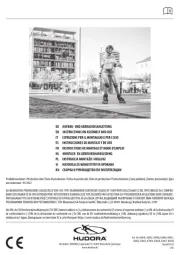
3 Juli 2025
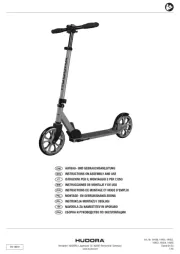
8 Mei 2025
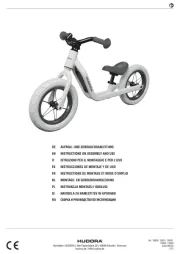
8 Mei 2025
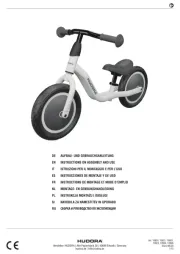
8 Mei 2025
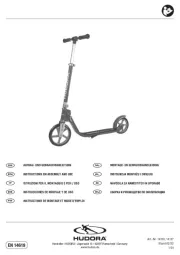
18 Maart 2025
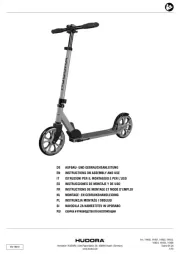
18 Maart 2025
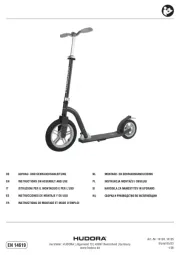
18 Maart 2025
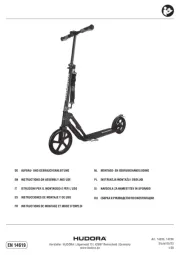
18 Maart 2025
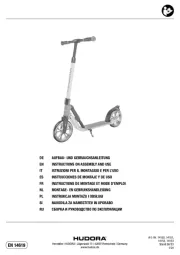
18 Maart 2025

7 Juli 2023
Handleiding Niet gecategoriseerd
- Edouard Rousseau
- Petri
- Prismate
- Xigmatek
- Seagate
- Olympia
- Wachsen
- Microlife
- IOttie
- Iseki
- Creality3D
- OBH Nordica
- Euromaid
- Łucznik
- Zacuto
Nieuwste handleidingen voor Niet gecategoriseerd

12 September 2025

12 September 2025
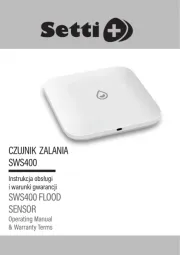
12 September 2025
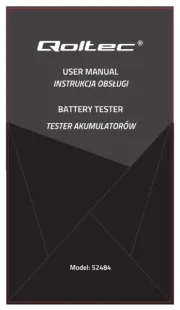
12 September 2025
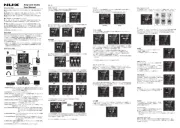
12 September 2025
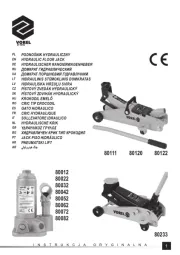
12 September 2025
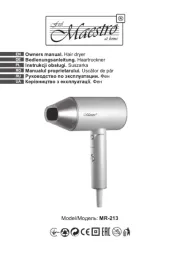
12 September 2025
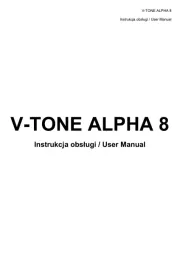
12 September 2025

12 September 2025
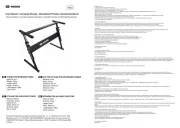
12 September 2025